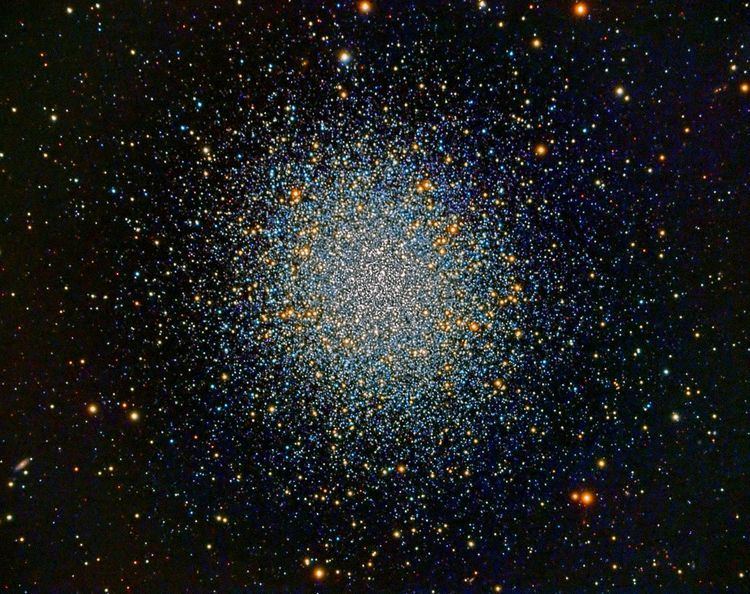Class V Right ascension 16 41 41.24 Distance 22.2 kly (6.8 kpc) | Declination +36° 27′ 35.5″ Apparent magnitude (V) +5.8 | |
 | ||
Messier 13 (M13), also designated NGC 6205 and sometimes called the Great Globular Cluster in Hercules or the Hercules Globular Cluster, is a globular cluster of about 300,000 stars in the constellation of Hercules.
Contents
Discovery and visibility
M13 was discovered by Edmond Halley in 1714, and catalogued by Charles Messier on June 1, 1764.
It is located at right ascension 16h 41.7m and declination +36° 28'. With an apparent magnitude of 5.8, it is barely visible with the naked eye on a very clear night. Its diameter is about 23 arc minutes and it is readily viewable in small telescopes. Nearby is NGC 6207, a 12th magnitude edge-on galaxy that lies 28 arc minutes directly north east. A small galaxy, IC 4617, lies halfway between NGC 6207 and M13, north-northeast of the large globular cluster's center.
Characteristics
M13 is about 145 light-years in diameter, and it is composed of several hundred thousand stars, the brightest of which is a red giant, the variable star V11, with an apparent visual magnitude of 11.95. M13 is 25,100 light-years away from Earth.
Arecibo message
The Arecibo message of 1974, which contained encoded information about the human race, DNA, atomic numbers, Earth's position and other information, was beamed from the Arecibo Observatory radio telescope towards M13 as an experiment in contacting potential extraterrestrial civilizations in the cluster. While the cluster will move through space during the transit time, the proper motion is small enough that the cluster will only move 24 light years, only a fraction of the diameter of the cluster. Thus, the message will still arrive near the center of the cluster.
